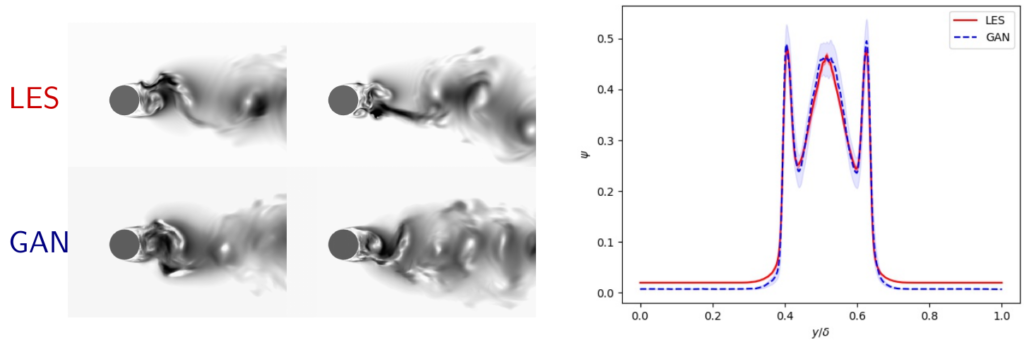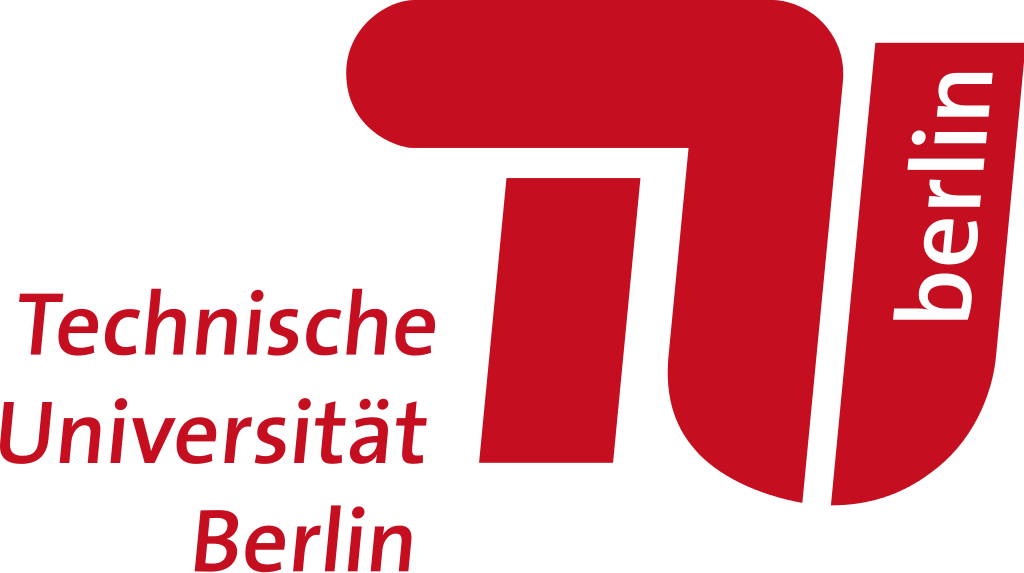Goal
In the GAL4STep project, we focus on the development of Generative Adversarial Networks (GAN) for scientic technical relevant problems in the field of autonomous driving and fluid dynamics. Both investigated problems come from different fields, but have in common the need to generate appropriate data to alleviate the problem of labeling costs in autonomous driving and computational costs in fluid dynamics.
Project Overview
For the first problem we investigate the use of GAN to close the domain gap between synthetic and real- world data in the field of autonomous driving for the downstream task of semantic segmentation. Real- world data lacks large amounts of ground truth information since the annotation of data is time-consuming and expensive. On the other side annotated driving scenarios can be simulated in the synthetic world automatically of unlimited amount. Considering the supervised learning task of semantic segmentation, the rule of thumb is: The more labeled proper data we have for the training, the better it is. Hence, the aim is to use the synthetic data for the training of the semantic segmentation network. The problem here is that a neural network trained on synthetic data is very likely to perform poor on real-world data due to the so-called domain shift between both. In this project, the aim is to develop methods which can cope with the shift between the source domain of synthetic data and the target domain of real-world data by enrichment of the synthetic data with photorealistic appearance so that it can be used for the supervised learning task.

The second problem is in the area of fluid dynamics. We investigate the application of generative learning to sample state snapshots from the invariant measure of chaotic, deterministic systems in terms of ergodicity. This introduces GAN as another approach to model turbulence in technically challenging flow problems. The difficulty in the simulation of turbulence lies in the fact that turbulent flow develops ever smaller structures, which are hard to resolve numerically. While there exist methods such as the Large Eddy Simulation (LES) that are able to capture the fine details of a vortex flow, they come at enormous computational costs. The aim of this project is to develop a mathematically well-founded learning approach to generate images of turbulent flows that are as good as the output of the LES in terms of visual level and physical quantities, while requiring significantly less computation effort. In addition, the developed learning methods should be able to generalize over changes in geometry. Regarding the numerical experiments, we will also pay attention to exploring and developing further appropriate evaluation methods.

1,2
References
- 1.Drygala C, Winhart B, di Mare F, Gottschalk H. Generative modeling of turbulence. Physics of Fluids. Published online March 1, 2022. doi:10.1063/5.0082562
- 2.Drygala C, di Mare F, Gottschalk H. Generalization capabilities of conditional GAN for turbulent flow under changes of geometry. Published online 2023. doi:10.48550/ARXIV.2302.09945
Associated Partners
Project Publications
- Drygala, Claudia, Francesca di Mare, and Hanno Gottschalk (2023). ‘‘Generalization capabilities of conditional GAN for turbulent flow under changes of geometry’’. In: Proceedings of the 15th International Conference on Evolutionary and Deterministic Methods For Design, Optimization and Control (EUROGEN 2023).
- Drygala, Claudia, Edmund Ross, Francesca di Mare, and Hanno Gottschalk (2024). ‘‘Comparison of generative learning methods for turbulence modeling’’. In: arXiv preprint arXiv:2411.16417.
- Drygala, Claudia, Matthias Rottmann, Hanno Gottschalk, Klaus Friedrichs, and Thomas Kurbiel (2022). ‘‘Background-foreground segmentation for interior sensing in automotive industry’’. In: Journal of Mathematics in Industry 12.1, p. 13.
- Drygala, Claudia, Benjamin Winhart, Francesca di Mare, and Hanno Gottschalk (2022). ‘‘Generative modeling of turbulence’’. In: Physics of Fluids 34.3.

